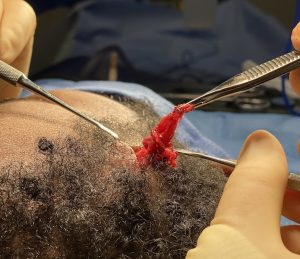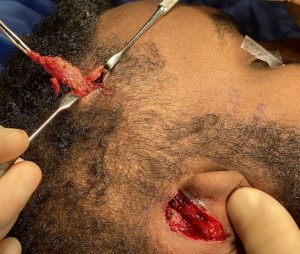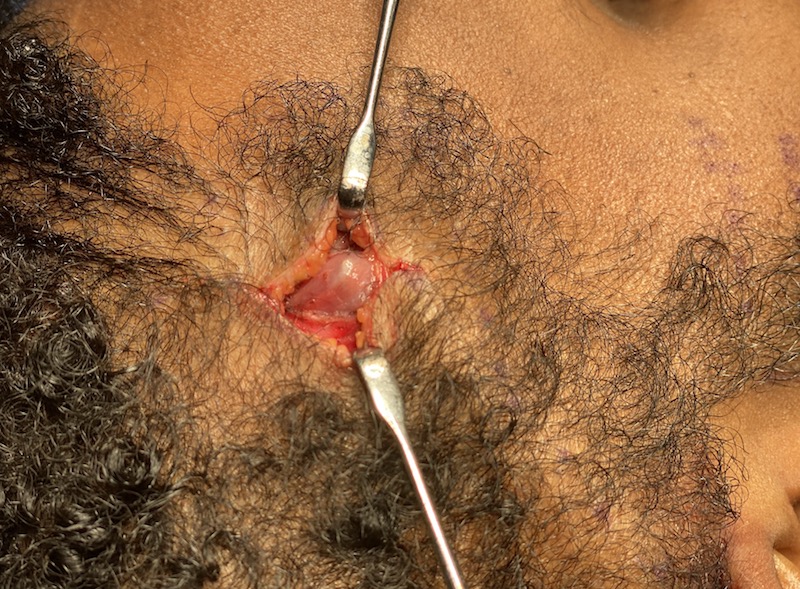Temporal reduction is a well known and effective procedure for head width reduction. It specifically removes the thinner posterior portion of the temporalis muscle that covers the convex portion of the temporal bone above the ear. This muscle due to its greater thickness in some people can create an undesired amount of convexity to the side of the head when viewed from the front or rear. Removing this section of the temporalis muscle instantly changes the shape of the side the head to a more straight profile and does so without having any adverse consequences to the movement of the lower jaw to which the muscle inserts.
But the posterior temporal muscle is but a portion of the muscle’s surface area. The anterior portion of the muscle is bigger in thickness and is located at the non-hair bearing and frontal portion of the temporal hairline. In some wide head patients the increased thickness of the muscle may extend into the anterior part of the muscle and up to the bony temporal line of the forehead. This area of the muscle is not accessible from the typical postauricular incision used for posterior temporal muscle removal.


For the sake of completeness the anterior temporal muscle bulge could also be treated by Botox injections for a non-surgical approach. This seems most relevant when the anterior muscle bulge exists by itself and posterior temporal reduction surgery is not needed.
Dr. Barry Eppley
Indianapolis, Indiana




